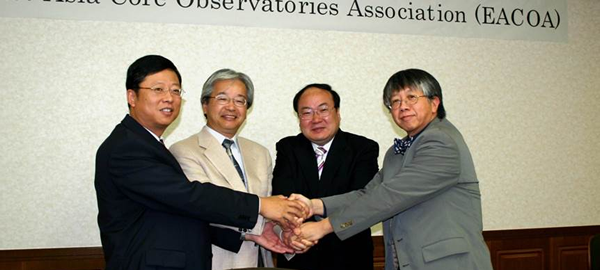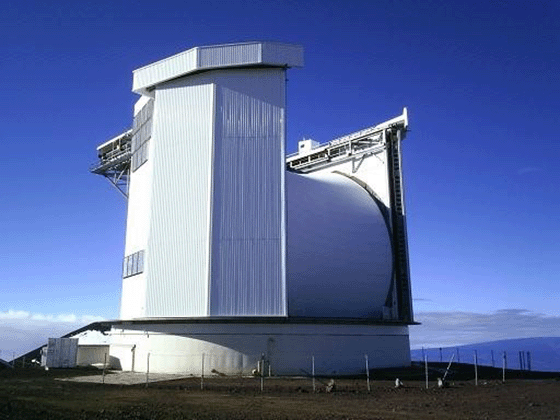On Sep. 21, 2005, a memorandum of understanding for the East Asian Core Observatories Association (EACOA) was signed by the Head vice Director of National Astronomical Observatories of Chinese Academy of Sciences (NAOC), Dr. Zhao Gang, the President of Korea Astronomy and Space Science Institute (KASI), Dr. Seok Jae Park, the Director General of the National Astronomical Observatory of Japan (NAOJ), Dr. Norio Kaifu, and the Director, Dr. Ho, of Academia Sinica Institute of Astronomy and Astrophysics (ASIAA). EACOA aims to establish powerful and cutting-edge astronomy programs in East Asia by promoting cooperation and joint projects based on the four institutes, and by coordinating the exchange and use of observations, instruments, and human resources. It strongly supports cooperative activities, such as the organization of the East Asian Meeting of Astronomy (EAMA symposium), the East Asian Young Astronomers Meeting (EAYAM), East Asian-VLBI consortium, and the EA-ALMA Consortium. The exchanges of talented young astronomers are achieved through the prestigious EACOA Postdoctoral Fellowship program, which was launched in 2012 and hosts in general 4 - 6 Postdoctoral Fellows stationing among the four institutes.

In 2014, EACOA established the East Asian Observatory (EAO), which is chartered as a non-profit Hawaii corporation. The mission of EAO is to pursue joint astronomy projects within the East Asian region, such as building and operating facilities, which enhance and leverage existing and planned regional facilities. EAO is currently operating the James Clerk Maxwell Telescope (JCMT) on Maunakea, Hawai`iMauna Kea in Hawaii, the largest single-element telescope in the world dedicated to detecting and imaging sub-millimeter radiation. JCMT is also a partner of the Event Horizon Telescope (EHT), an international collaboration that has received the 2020 Breakthrough Prize in Fundamental Physics for its achievement in capturing, for the first time in history, the image of a supermassive black hole in the galaxy M87. For broadening the base for the EAO operation, institutes from the South East Asian regions are participating the EAO. National Astronomical Research Institute of Thailand (NARIT) joined EAO as a full partner in 2021, and the University of Hong Kong (HKU) is an associate partner. Institutes in other regions including Vietnam, Malaysia, India, and Indonesia are also observers.
